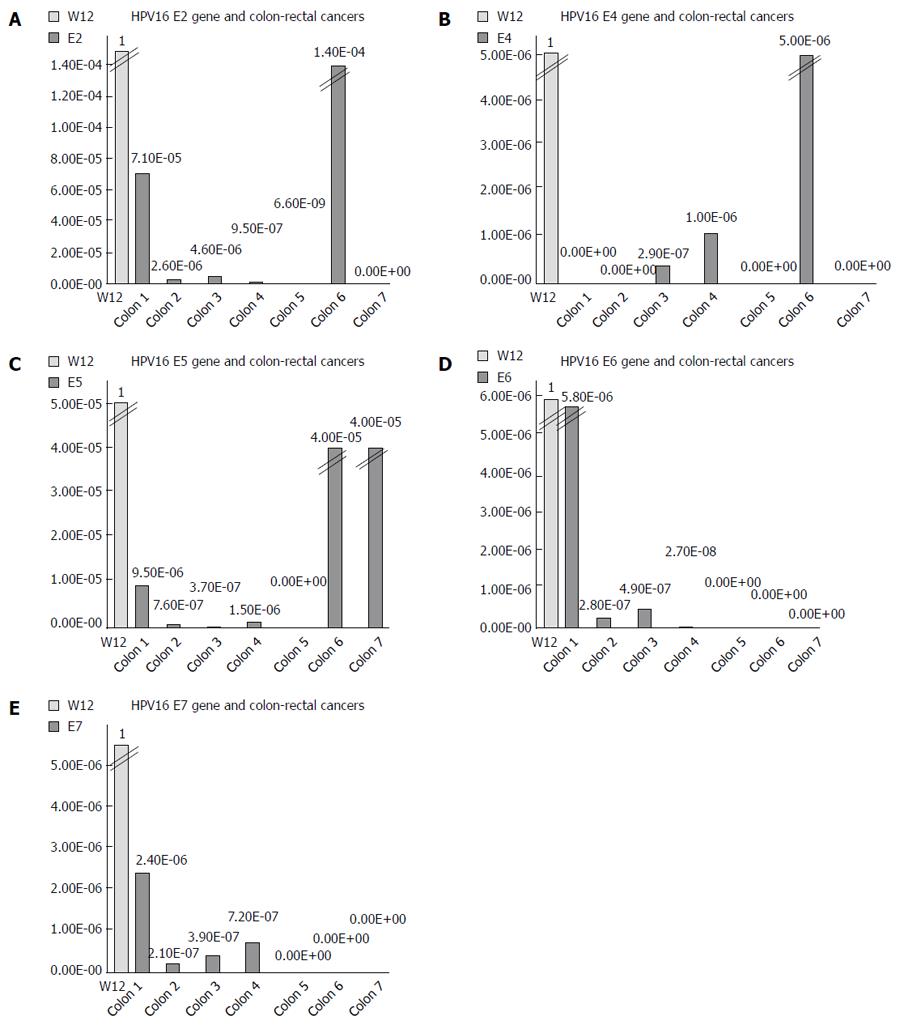Copyright
©The Author(s) 2015.
World J Gastroenterol. Jan 7, 2015; 21(1): 342-350
Published online Jan 7, 2015. doi: 10.3748/wjg.v21.i1.342
Published online Jan 7, 2015. doi: 10.3748/wjg.v21.i1.342
Figure 1 Human papillomavirus 16 relative gene quantifications.
Data obtained in human papillomavirus (HCV) 16 positive colorectal cancer tissues through real time polymerase chain reaction analysis by the ΔΔCT method, with W12 cells as a reference considered equal to 1. Primer sequences were as follows: A: E2: For GCAACGAAGTATCCTCTCCTG; Rev GCGA CGGCTTTGGTATGG; B: E4: For AATTATTAGGCAGCACTTGG; Rev GTCGTCTGTGTTTC TTCG; C: E5: For CGCTGCTTTTGTCTGTGTCT; Rev GCGTGCATGTGTATGTATTAAAAA; D: E6: For GCACCAAAAGAGAACTGCAATGTT; Rev AGTCATATACCTCACGTCGCGCA GTCA; E: E7: For CAAGTGTGACTCTACGCTTCGG; Rev GTGGCCCATTAACAGGTCTTC CAA. β-actin: For TCACCCACACTGTGCCCATCTACGA; Rev CAGCGGAACCGCTCAT TGCCAATGG. The thermal cycler conditions were: 95 °C for 3 min, followed by 40 cycles of 95 °C for 10 s and 60 °C for 30 s, followed by a melting curve starting at 55 °C.
- Citation: Lorenzon L, Mazzetta F, Pilozzi E, Uggeri G, Torrisi MR, Ferri M, Ziparo V, French D. Human papillomavirus does not have a causal role in colorectal carcinogenesis. World J Gastroenterol 2015; 21(1): 342-350
- URL: https://www.wjgnet.com/1007-9327/full/v21/i1/342.htm
- DOI: https://dx.doi.org/10.3748/wjg.v21.i1.342









